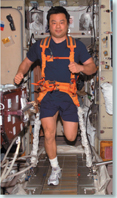32 Study Guide
 Structure and Function
Structure and Function
The skeletal, muscular, and integumentary systems all form the structure of the human body. In addition, the three systems have many functions that contribute to homeostasis.
32.1 The Skeletal System
 The skeleton supports the body, protects internal organs, assists movement, stores minerals, and is a site of blood cell formation.
The skeleton supports the body, protects internal organs, assists movement, stores minerals, and is a site of blood cell formation.
 Bones are a solid network of living cells and protein fibers that are surrounded by deposits of calcium salts.
Bones are a solid network of living cells and protein fibers that are surrounded by deposits of calcium salts.
 Joints contain connective tissues that hold bones together. Joints permit bones to move without damaging each other.
Joints contain connective tissues that hold bones together. Joints permit bones to move without damaging each other.
axial skeleton (922)
osteoblast (925)
appendicular skeleton (922)
osteocyte (925)
Haversian canal (924)
osteoclast (925)
bone marrow (924)
joint (926)
cartilage (924)
ligament (927)
ossification (925)

32.2 The Muscular System
 There are three different types of muscle tissue: skeletal, smooth, and cardiac.
There are three different types of muscle tissue: skeletal, smooth, and cardiac.
 During a muscle contraction, myosin filaments form cross-bridges with actin filaments. The cross-bridges then change shape, pulling the actin filaments toward the center of the sarcomere.
During a muscle contraction, myosin filaments form cross-bridges with actin filaments. The cross-bridges then change shape, pulling the actin filaments toward the center of the sarcomere.
 Skeletal muscles generate force and produce movement by pulling on body parts as they contract.
Skeletal muscles generate force and produce movement by pulling on body parts as they contract.
muscle fiber (929)
neuromuscular myofibril (930)
junction (931)
myosin (930)
acetylcholine (931)
actin (930)
tendon (932)
sarcomere (930)

32.3 Skin—The Integumentary System
 The integumentary system serves as a barrier against infection and injury, helps to regulate body temperature, removes wastes from the body, gathers information, and produces vitamin D.
The integumentary system serves as a barrier against infection and injury, helps to regulate body temperature, removes wastes from the body, gathers information, and produces vitamin D.
 Skin and its related structures—the hair, nails, and several types of glands—make up the integumentary system.
Skin and its related structures—the hair, nails, and several types of glands—make up the integumentary system.
 The skin's constant interaction with the environment can lead to problems of varying degrees of severity. Such problems include acne, hives, and skin cancer.
The skin's constant interaction with the environment can lead to problems of varying degrees of severity. Such problems include acne, hives, and skin cancer.
epidermis (936)
dermis (937)
keratin (936)
sebaceous gland (937)
melanocyte (936)
hair follicle (937)
melanin (936)
Think Visually Develop a concept map to show the relationships between the different systems discussed in this chapter.

Table of Contents
- Formulas and Equations
- Applying Formulas and Equations
- Mean, Median, and Mode
- Estimation
- Using Measurements in Calculations
- Effects of Measurement Errors
- Accuracy
- Precision
- Comparing Accuracy and Precision
- Significant Figures
- Calculating With Significant Figures
- Scientific Notation
- Calculating With Scientific Notation
- Dimensional Analysis
- Applying Dimensional Analysis




